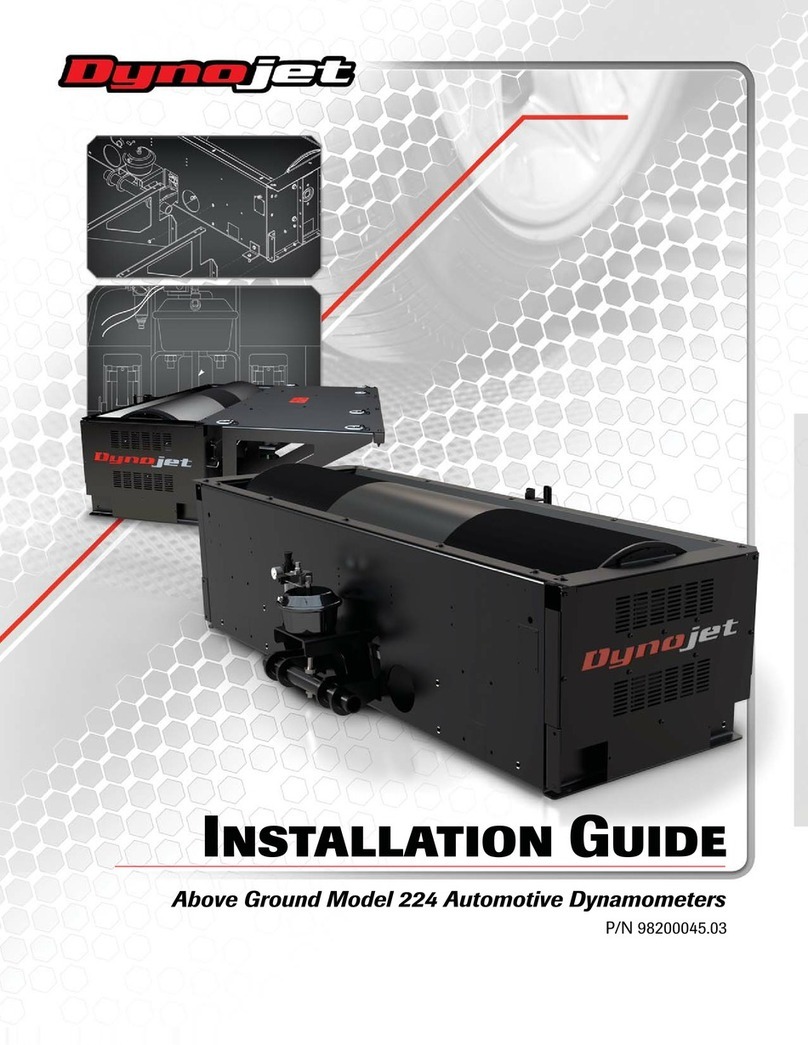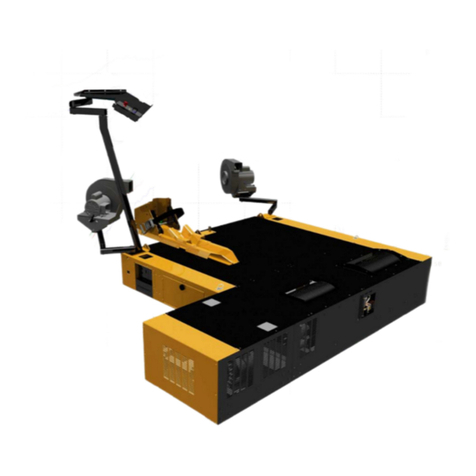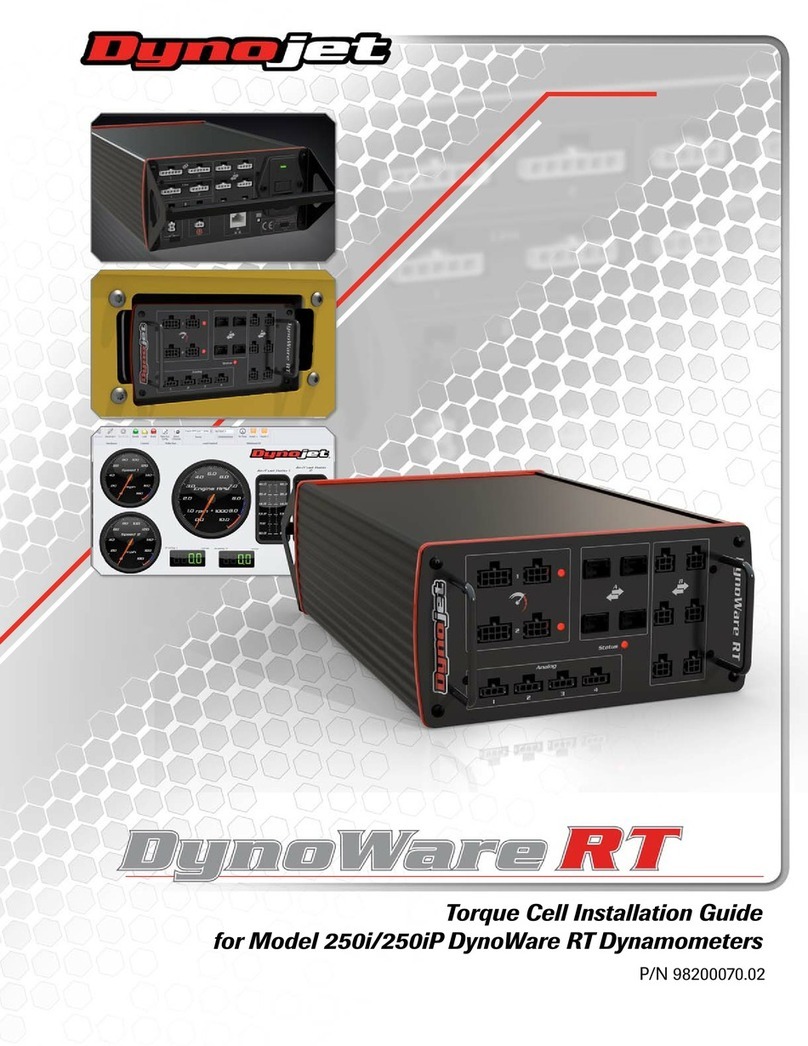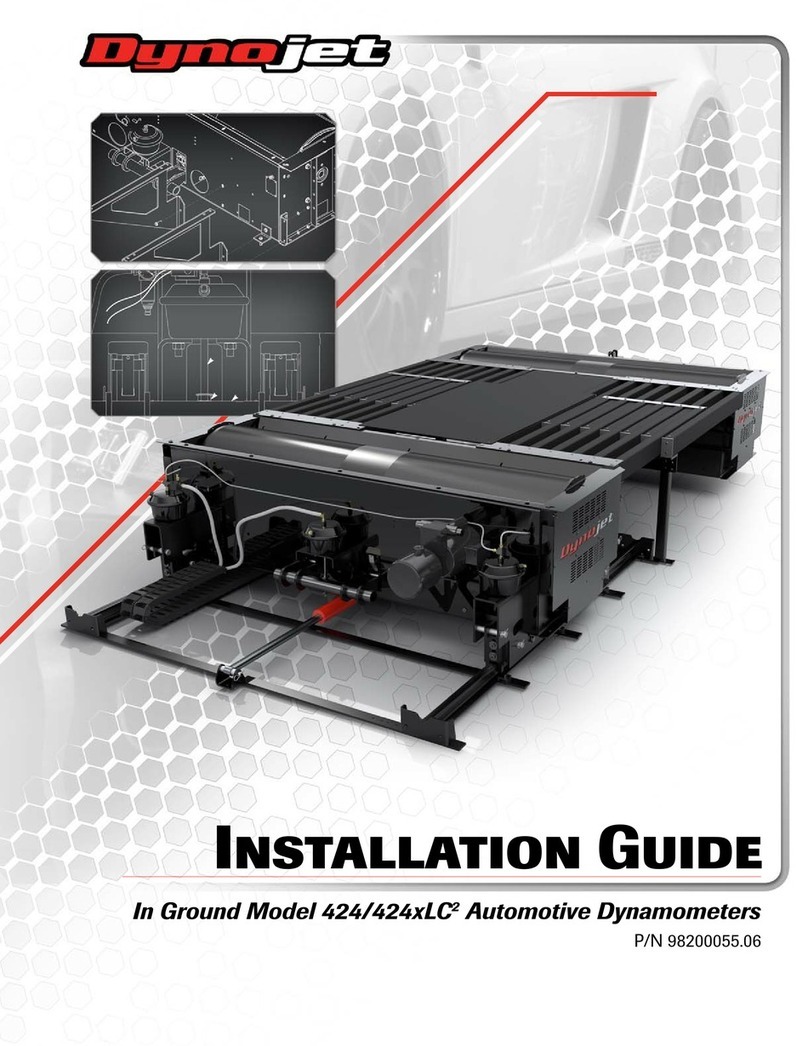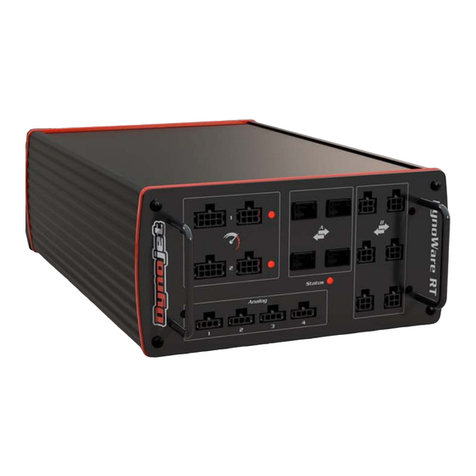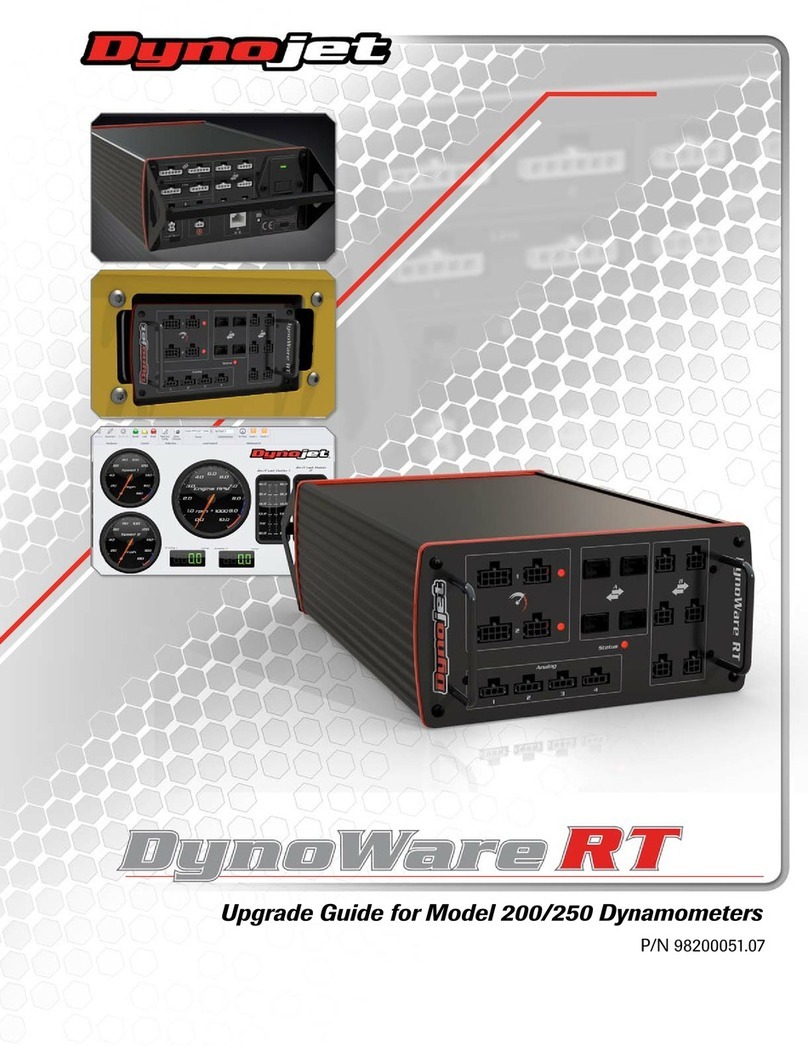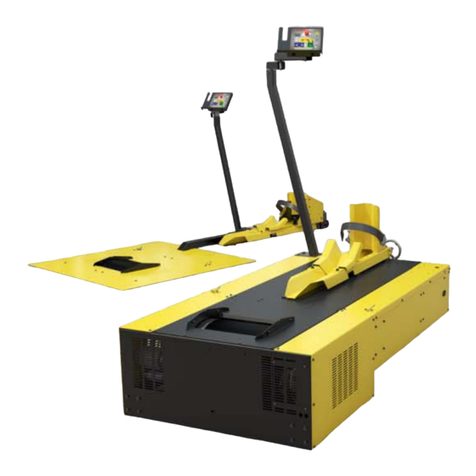
Model SD12 Scooter Dynamometer Installation Guide
iv
Electrostatic Discharge Precautions
Electrostatic Discharge
Electrostatic Discharge (ESD), or static shock, can damage electronic components within the
dynamometer. The damage may occur at the time of an ESD occurrence, or the shock may degrade the
component, resulting in a premature component failure later. To avoid ESD damage, always practice
good ESD control precautions when servicing the dynamometer. Dynojet designs its dynamometers
to be very tolerant of static shocks by the users, but the electronics are vulnerable when the electronics
areexposed.ESDoccursasaresultofadifferenceofpotentialbetweentwoobjectswhenthetwoobjects
touch. Damage occurs as a result of the energy released when the discharge (touch) occurs. The
difference of potential can accumulate by as simple an action as a user moving across carpet or a seat.
If that person’s energy is discharged directly to the electronics, the electronics can be damaged.
Precautions
To protect against ESD damage, you must eliminate the difference of potential before the electronics
arehandled.Touch thechassisofthe dynamometerbeforetouchinganyoftheelectronics.Bytouching
the chassis, you discharge any static shocks to the chassis instead of to the electronics.
If you are holding a circuit board or dynamometer component in your hand when you approach the
machine, touch the chassis of the dynamometer with your hand before installing the circuit board or
component.
When handing a circuit board or component to someone, touch that person with your hand first, then
hand them the component.
Always carry circuit boards in anti-static bags when the boards are exposed (removed from the
dynamometer).
Battery Fire and Explosion Hazards
There is a danger of explosion if the battery is incorrectly replaced. Replace only with the same or
equivalent type recommended by the manufacturer. Discard used batteries according to the
manufacturer’s instructions.
Automotive Batteries
In operation, batteries generate and release flammable hydrogen gas. They must always be assumed
to contain this gas which, if ignited by burning cigarette, naked flame or spark, may cause battery
explosion with dispersion of casing fragments and corrosive liquid electrolyte. Carefully follow
manufacturer's instructions for installation and service. Keep away all sources of gas ignition and do
not allow metallic articles to simultaneously contact the negative and positive terminals of a battery.
Do not allow the positive and negative terminals to short-circuit. The dynamometer chassis is tied to
the negative side of the battery. Do not short between the positive battery terminal or the starter
connections to the chassis. In addition, make sure metal tools such as screw drivers, wrenches, and
torque wrenches do not come in contact with the negative and positive terminals of the battery. Short
circuiting the terminals of the battery can cause burn injuries, damage to the dynamometer, or trigger
explosions.
Charging
Batteries being charged will generate and release flammable hydrogen gas. Charging space should be
ventilated.Keepbatteryventcapsinposition.Prohibitsmokingandavoidcreationofflamesandsparks
nearby.
Wear protective clothing, eye and face protection, when charging or handling batteries.
